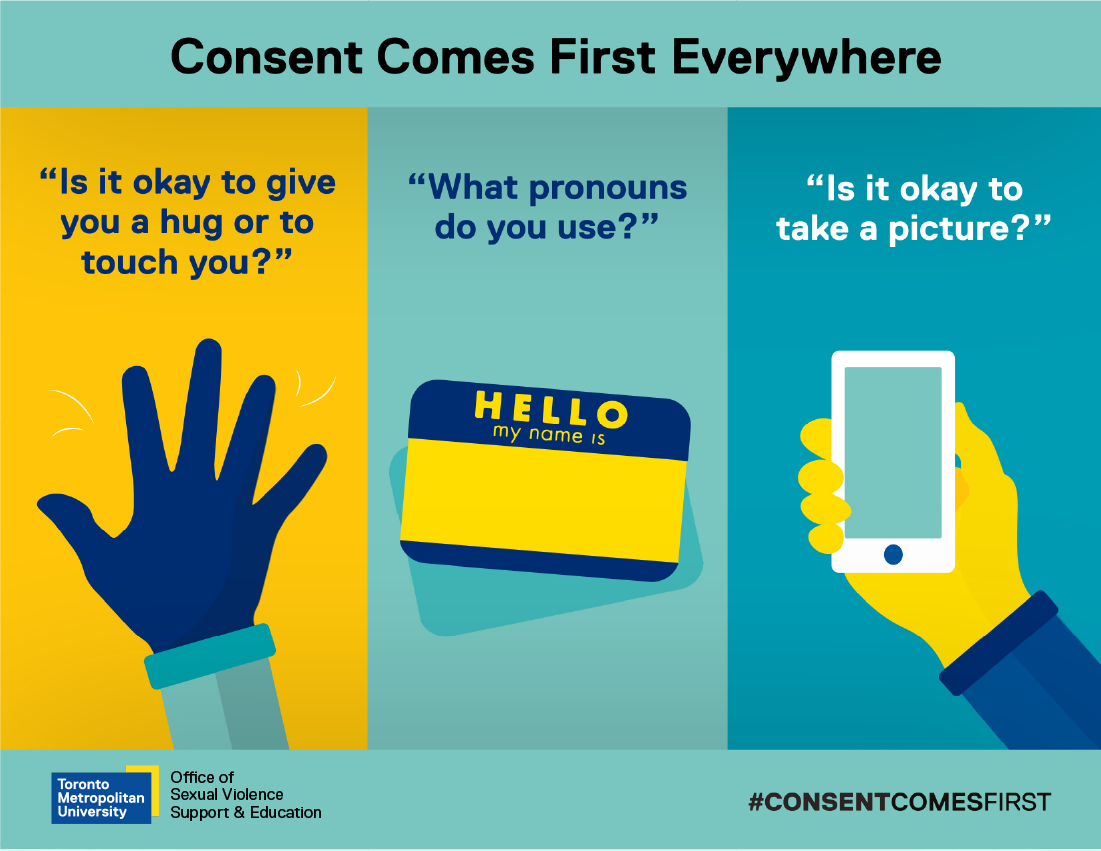You are now in the main content area
Understanding Consent

What is consent?
In Canada, the law very clearly states that there has to be an affirmative “yes” - or voluntary agreement - to engage in sexual activity. Sexual assault occurs when consent is absent and it is a criminal offence. This means that consent must be an active process, without the influence of coercion. One should never assume consent.
- Consent is active and continuous, not passive or silent.
- It is the responsibility of the person who wants to engage in physical contact or sexual activity to make sure that they have consent from the other person(s) involved.
- Consent is not the absence of “no” or silence.
- Consent to one sexual act does not constitute or imply consent to a different sexual act.
- Consent is required regardless of the parties’ relationship status or sexual history together.
- Consent cannot be given by a person who is incapacitated by alcohol or drugs or who is unconscious (including being asleep) or otherwise lacks the capacity to give consent.
- Consent is not possible if an individual uses their position of power or authority to manipulate someone into saying “yes.”
- If a survivor’s judgement is impaired, consent is not valid.

For more information visit:
- The Law of Consent in Sexual Assault (external link, opens in new window)
- Tea Consent on Youtube (external link, opens in new window)
- 7 Rules For Fun And Consensual Sex (external link, opens in new window)
- What if we treated all consent like society treats sexual consent? (external link, opens in new window)
- Ted Talk by Jackson Katz: Violence Against Women – It’s a Men’s Issue (external link, opens in new window)
- How Do You Know if Someone Wants to Have Sex with You? (external link, opens in new window)
- When You Know They Are Into Into It (external link, opens in new window)
- When They Are Kinda Into It (external link, opens in new window)
- When They Are Not Into It (external link, opens in new window)

Consent Comes First Everywhere
- "Is it okay to give you a hug or to touch you?"
- "What pronouns do you use?"
- "Is it okay to take a picture?"